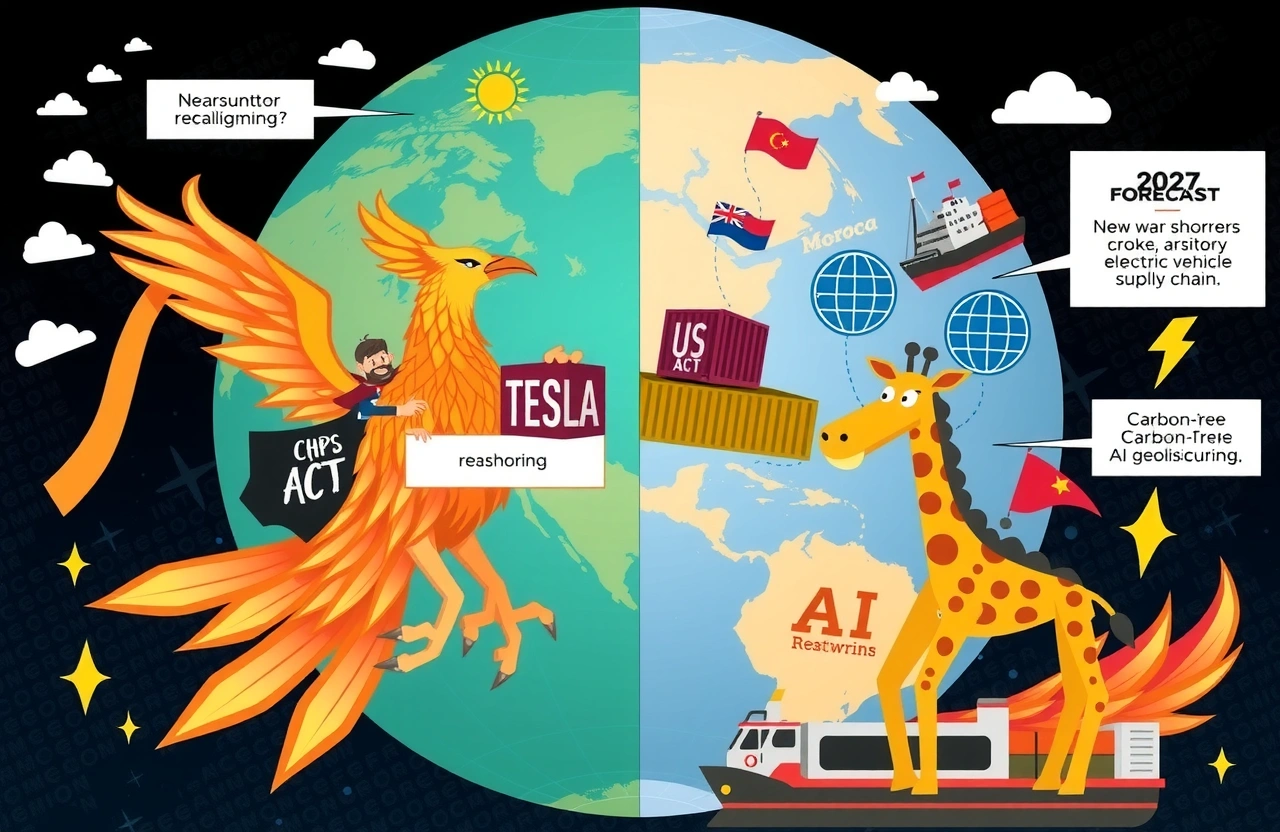Industrial Exodus Gains Momentum
The relentless crossfire of tariffs between major economies continues to trigger seismic shifts in global production networks. As U.S.-China tensions entered their seventh consecutive year in 2023, manufacturers initiated their largest supply chain migration since the 1990s outsourcing wave. This trade realignment sees companies relocating production facilities away from geopolitical hotspots at record speed.
Tariff Escalation Timeline
– 2018: U.S. imposes 25% tariffs on $50B Chinese goods
– 2020: Phase One trade deal fails to halt tensions
– 2023: CHIPS Act prompts $200B semiconductor reshoring
– Present: Average tariff on China-made goods: 19.3% versus 3% pre-2018
Companies face a stark choice: absorb punishing tariffs or reengineer their international footprint. A 2023 Deloitte survey revealed 87% of multinationals accelerated relocation plans after Russia’s Ukraine invasion exposed supply fragility.
Secondary Sanctions Ripple Effect
Beyond direct tariffs, U.S. restrictions on semiconductor technology and Russia sanctions forced unexpected operational changes. European manufacturers like BASF lost 74% of Russian chemical revenue overnight, accelerating plant construction in North America. Mid-sized suppliers face particular vulnerability; 38% experienced contract cancellations due to clients’ sudden relocation requirements according to McKinsey data.
Trade Realignment Reshapes Manufacturing Geography
The search for tariff-advantaged locations fuels explosive growth in Southeast Asia and North America. Vietnam’s electronics exports surged 85% since 2020, while Mexico surpassed China as America’s top trading partner in 2023. This structural trade realignment prioritizes production proximity over pure cost savings.
Diversification Hotspots Emerge
– India: 1,300+ new foreign factories registered in 2021-2023 including Apple’s iPhone production shift
– Thailand: EV battery production grew 200% after Chinese battery giants skirted U.S. tariffs
– Morocco: Automotive exports to EU surged 35% with Renault-Nissan relocation
– Poland: Became key German industrial supplier after Ukraine war disruptions
Reshoring Accelerates
American factories added 800,000 jobs in 24 months as companies like TSMC invested $40B in Arizona semiconductor plants. The Inflation Reduction Act’s tax credits prove particularly potent, subsidizing 30-50% of new factory costs for clean tech manufacturers. However, reshoring faces skilled labor shortages causing 45% of projects to experience construction delays per Bureau of Labor Statistics reports.
Sector-Specific Revolution
Different industries experience manufacturing relocation at varying velocities. Electronics lead the transformation with automakers, pharmaceuticals, and textiles following distinct timelines based on regulatory pressures and logistical needs.
Semiconductor Supply Chain Rewrite
The $280 billion global chip shortage crisis permanently altered production geography:
– TSMC constructing six new fabs outside Taiwan
– South Korea investing $450B in advanced chip production
– Intel establishing European mega-site in Germany of special interest to geopolitical analysts
Chips exemplify the national security dimension driving trade realignment, with 92% of advanced semiconductors previously concentrated in Taiwan before diversification initiatives.
Automotive Industry Transformation
Electric vehicle mandates turbocharge supply chain reorganization:
– BMW builds $1B EV plant in Hungary
– Tesla shifts German battery production to Texas after EU carbon rules
– Lithium refining moves from China to Australia and Chile
EVs require reimagined logistics flows as battery weight and safety concerns disrupt traditional shipping models.
Logistics Infrastructure Transformation
Manufacturing relocation forces massive investments in ports, railways, and warehousing to support new trade patterns. Southern U.S. ports like Savannah and Charleston expanded capacity 42% since 2020 to handle diverted Asian shipments.
Nearshoring Infrastructure Demands
– Mexico upgrading 18 border crossings
– Vietnam constructing $15B deep-water port at Lach Huyen
– India developing four new industrial corridors connecting ports to manufacturing zones
The trade realignment reveals surprising choke points: Mexican rail networks currently operate at 95% capacity, forcing companies like GM to use costly truck convoys.
The $1.4 Trillion Tech Realignment
Technology serves as both driver and subject of supply chain transformation. Cloud infrastructure spending outside traditional hubs soared to $78B in 2023 as data localization laws proliferated. Meanwhile, industrial automation accelerates relocation through robotics that offset higher labor costs in new locations.
Digital Supply Chain Evolution
– Blockchain adoption up 300% for customs documentation
– Predictive analytics reduce relocation risks
– 80% of manufacturers implementing digital twin technology for new facilities
As Siemens CEO Roland Busch noted: “The factory of 2027 designs its location strategy with artificial intelligence before pouring foundation”.
New Rules of Engagement
Corporate strategists now treat geopolitical risk as primary calculus in supply chain decisions rather than an afterthought. Five principles now define successful navigation:
1. Dual Sourcing Minimum: Critical components sourced from two unrelated regions
2. Political Resilience Audits: Quarterly assessment of supplier country stability
3. Tariff Engineering: Design adjustments to qualify products for preferential trade treatment
4. Inventory Buffering: Stockpiles for components still concentrated in high-tension zones
5. Supplier Financial Vetting: Monitoring partners’ vulnerability to subsidy cuts
Leading firms like Adidas now include geopolitical analysts in procurement teams, modeling scenarios from Taiwan contingencies to European energy crises.
Beyond 2025: Structural Shifts Become Permanent
Demographic shifts will lock in relocation patterns by 2030. Vietnam’s median age of 32 versus China’s 40 provides crucial labor advantages, while clean energy infrastructure dictates where carbon-intensive industries can operate. Critically, second-tier suppliers must follow anchor manufacturers abroad to remain viable.
Sustainability Compression
Green mandates unintentionally accelerate relocation:
– EU carbon border tax pushes steel production to renewable-powered regions
– U.S. emissions standards drive aluminium smelting to Canada
– Shipping cost fluctuations make local manufacturing competitive
Forward-looking firms build factories with solar microgrids, avoiding both carbon taxes and energy politics. As Winston & Strawn trade attorney Rachel Hooper explains: “Countries with reliable clean energy will become supply chain winners regardless of labor costs”.
The Path Forward
Corporate supply chains face permanent redesign as geopolitical tension becomes systemic rather than cyclical. Companies achieving balance between diversification cost, tariff optimization, and resilience monitoring will dominate their sectors. Speed matters; firms launching relocation now gain crucial first-mover advantages in industrial parks, supplier networks, and logistical corridors. Begin mapping alternative manufacturing pathways before competitors lock down premium sites—the next decade rewards those transforming vulnerability into strategic strength.



